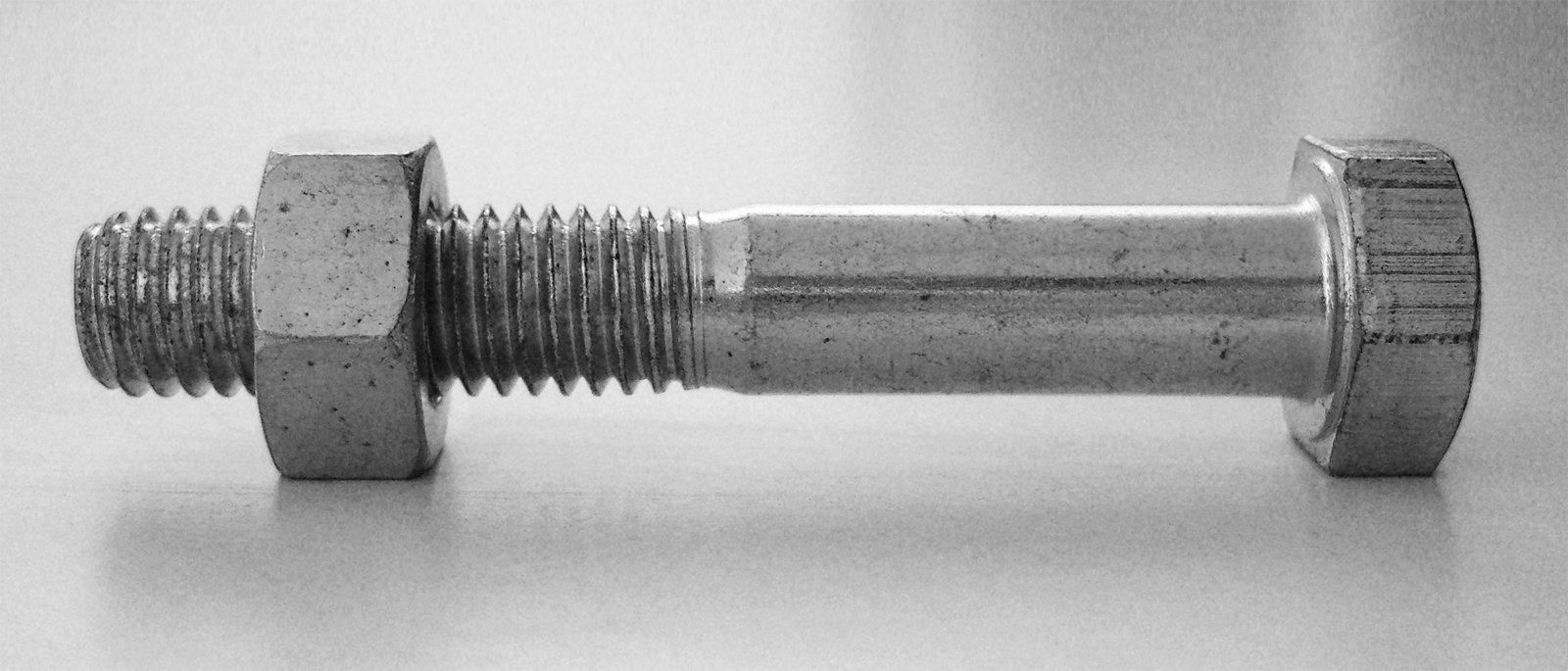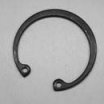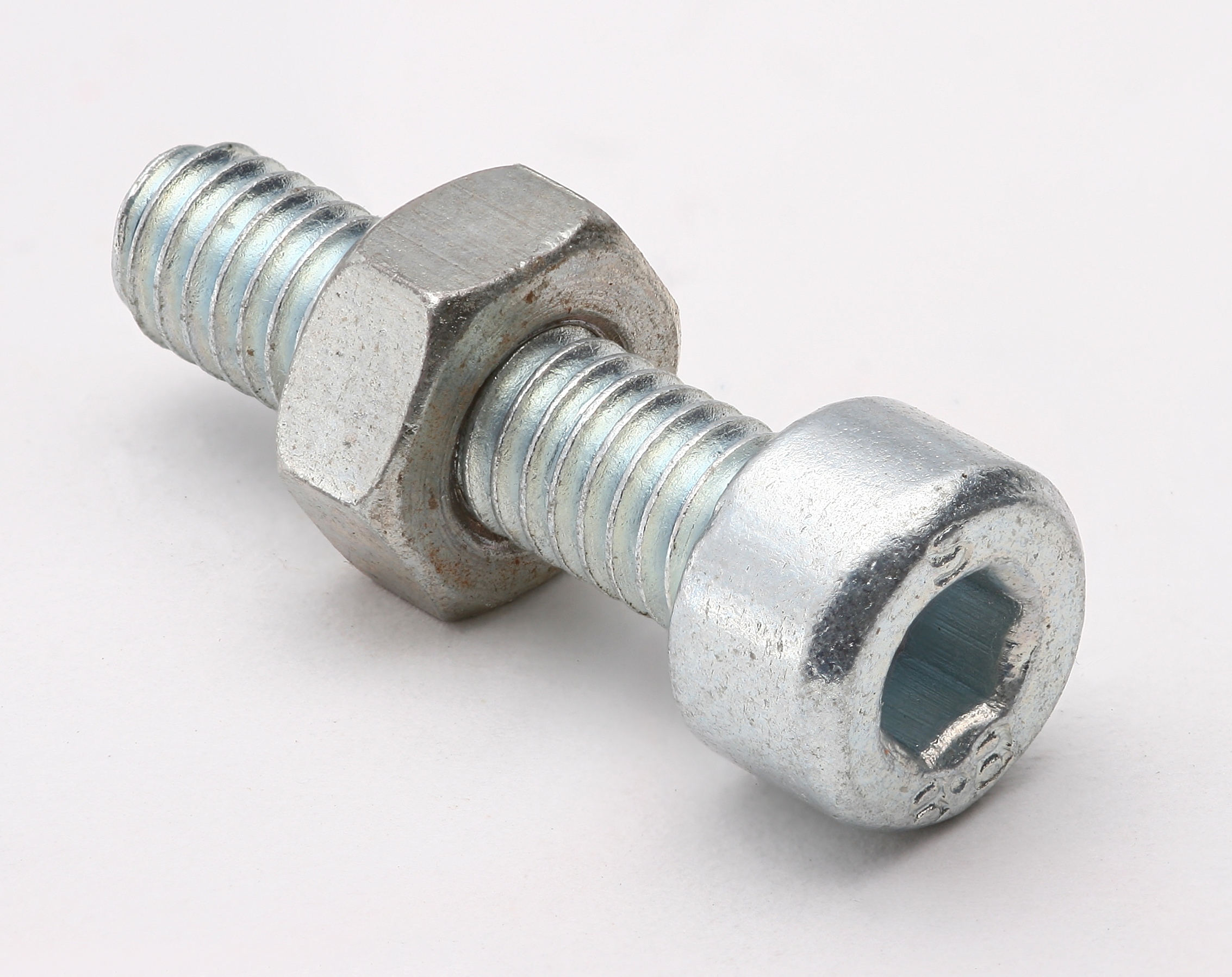|
Positive Locking Device
A positive locking device is a device used in conjunction with a fastener in order to positively lock the fastener. This means that the fastener cannot work loose from vibrations. The following is a list of positive locking devices: *A split beam nut *A castellated nut and a split pin *A hex nut or cap screw A screw and a Bolt (fastener), bolt (see ''#Differentiation between bolt and screw, Differentiation between bolt and screw'' below) are similar types of fastener typically made of metal and characterized by a helix, helical ridge, called a ''m ... and a tab washer *A hex nut or cap screw and a lock plate * Safety wiring with various types of fasteners File:Nut lock plate.svg, A locking plate File:Nut tab washer.svg, A tab washer References *{{cite book , url=http://www.faa.gov/regulations_policies/advisory_circulars/index.cfm/go/document.information/documentid/99861 , title=AC 43.13-1B - Acceptable Methods, Techniques, and Practices - Aircraft Inspection and Re ... [...More Info...] [...Related Items...] OR: [Wikipedia] [Google] [Baidu] |
Positive
Positive is a property of positivity and may refer to: Mathematics and science * Positive formula, a logical formula not containing negation * Positive number, a number that is greater than 0 * Plus sign, the sign "+" used to indicate a positive number * Positive operator, a type of linear operator in mathematics * Positive result, a result that has been found significant in statistical hypothesis testing * Positive test, a diagnostic test result that indicates some parameter being evaluated was present * Positive charge, one of the two types of electrical charge * Positive (electrical polarity), in electrical circuits * Positive lens, in optics * Positive (photography), a positive image, in which the color and luminance correlates directly with that in the depicted scene * Positive sense, said of an RNA sequence that codes for a protein Philosophy and humanities * Affirmative (policy debate), the team which affirms the resolution * Negative and positive rights, concerning ... [...More Info...] [...Related Items...] OR: [Wikipedia] [Google] [Baidu] |
Bolt (fastener)
A bolt is a form of threaded fastener with an external male thread requiring a matching pre-formed female thread such as a nut. Bolts are very closely related to screws. Bolts vs. screws The distinction between a bolt and a screw is poorly-defined. The academic distinction, per ''Machinery's Handbook'', is in their intended design: bolts are designed to pass through an unthreaded hole in a component and be fastened with the aid of a nut, although such a fastener can be used without a nut to tighten into a threaded component such as a nut-plate or tapped housing. Screws in contrast are used in components which contain their own thread, or to cut its own internal thread into them. This definition allows ambiguity in the description of a fastener depending on the application it is actually used for, and the terms screw and bolt are widely used by different people or in different countries to apply to the same or varying fastener. Bolts are often used to make a bolted joint. T ... [...More Info...] [...Related Items...] OR: [Wikipedia] [Google] [Baidu] |
Cotter (pin)
A cotter is a pin or wedge passing through a hole to fix parts tightly together. In British usage cotter pin has the same meaning,. but in the U.S. it means a split pin. Typical applications are in fixing a crank to its crankshaft, as in a bicycle, and a piston rod to a crosshead, as in a steam engine. The angle of the wedge determines the position of the parts being held; therefore, on a bicycle, the pedal arms will only be at 180 degrees to each other if the angle of the cotter pin's wedge is the same on both pins. Popular usage Formerly, it was common to mount bicycle cranks using a cotter, though now usually a more easily maintained arrangement is used such as a square tapered or splined interface. These cotters have a short threaded section at the narrower end of the taper, which is used to hold the cotter in place with a washer and nut Nut often refers to: * Nut (fruit), fruit composed of a hard shell and a seed, or a collective noun for dry and edible fruits or ... [...More Info...] [...Related Items...] OR: [Wikipedia] [Google] [Baidu] |
Drain Cock
A tap (also spigot or faucet: see usage variations) is a valve controlling the release of a liquid or gas. Nomenclature United Kingdom * Tap is used in the United Kingdom and most of the Commonwealth for any everyday type of valve, particularly the fittings that control water supply to bathtubs and sinks. United States * Faucet is the most common term in the US, similar in use to "tap" in British English, e.g. "water faucet" (although the term "tap" is also used in the US). * Spigot is used by professionals in the trade (such as plumbers), and typically refers to an outdoor fixture. * Silcock (and sillcock), same as "spigot", referring to a "cock" (as in stopcock and petcock) that penetrates a foundation sill. * Bib (bibcock, and hose bib or hosebibb), usually a freeze-resistant version of a "spigot". * Wall hydrant, same as "hosebibb". * Tap generally refers to a keg or barrel tap, though also commonly refers to a faucet that supplies either hot or cold water and not ... [...More Info...] [...Related Items...] OR: [Wikipedia] [Google] [Baidu] |
Circlip
A circlip (a portmanteau of "circle" and "clip"), also known as a C-clip, Rotor Clip, snap ring or Jesus clip, is a type of fastener or retaining ring consisting of a semi-flexible metal ring with open ends which can be snapped into place, into a machined groove on a dowel pin or other part to permit rotation but to prevent axial movement. There are two basic types: internal and external, referring to whether they are fitted into a bore or over a shaft. Circlips are often used to secure pinned connections. Details When used to retain piston wrist pins or gudgeon pins, the clips are known as wrist pin clips, wrist pin retainers, or gudgeon pin clips. The most commonly used circlip for this application is a simple spring steel circlip, or plain wire ring. The term "Jesus clip" comes from the propensity of the clip's spring action to launch the clip at a high velocity when removing or installing, leading to remarks such as, "Oh Jesus, where did it go?" E-clip Common examples ... [...More Info...] [...Related Items...] OR: [Wikipedia] [Google] [Baidu] |
Screw
A screw and a bolt (see '' Differentiation between bolt and screw'' below) are similar types of fastener typically made of metal and characterized by a helical ridge, called a ''male thread'' (external thread). Screws and bolts are used to fasten materials by the engagement of the screw thread with a similar ''female thread'' (internal thread) in a matching part. Screws are often self-threading (also known as self-tapping) where the thread cuts into the material when the screw is turned, creating an internal thread that helps pull fastened materials together and prevents pull-out. There are many screws for a variety of materials; materials commonly fastened by screws include wood, sheet metal, and plastic. Explanation A screw is a combination of simple machines: it is, in essence, an inclined plane wrapped around a central shaft, but the inclined plane (thread) also comes to a sharp edge around the outside, which acts as a wedge as it pushes into the fastened material, and th ... [...More Info...] [...Related Items...] OR: [Wikipedia] [Google] [Baidu] |
Torque
In physics and mechanics, torque is the rotational equivalent of linear force. It is also referred to as the moment of force (also abbreviated to moment). It represents the capability of a force to produce change in the rotational motion of the body. The concept originated with the studies by Archimedes of the usage of levers, which is reflected in his famous quote: "''Give me a lever and a place to stand and I will move the Earth''". Just as a linear force is a push or a pull, a torque can be thought of as a twist to an object around a specific axis. Torque is defined as the product of the magnitude of the perpendicular component of the force and the distance of the line of action of a force from the point around which it is being determined. The law of conservation of energy can also be used to understand torque. The symbol for torque is typically \boldsymbol\tau, the lowercase Greek letter ''tau''. When being referred to as moment of force, it is commonly denoted by . In ... [...More Info...] [...Related Items...] OR: [Wikipedia] [Google] [Baidu] |
Turnbuckle
A turnbuckle, stretching screw or bottlescrew is a device for adjusting the tension or length of ropes, cables, tie rods, and other tensioning systems. It normally consists of two threaded eye bolts, one screwed into each end of a small metal frame, one with a left-hand thread and the other with a right-hand thread. The tension can be adjusted by rotating the frame, which causes both eye bolts to be screwed in or out simultaneously, without twisting the eye bolts or attached cables. Uses Turnbuckles are most commonly used in applications which require a great deal of tension; they can range in mass from about ten grams for thin cable used in a garden fence, to thousands of kilograms for structural elements in buildings and suspension bridges. Aircraft Turnbuckles have been used in aircraft construction, especially during the early years of aviation. Historically, biplanes might use turnbuckles to adjust the tension on structural wires bracing their wings. Turnbuckles are also ... [...More Info...] [...Related Items...] OR: [Wikipedia] [Google] [Baidu] |
Nut (hardware)
A nut is a type of fastener with a screw thread, threaded hole. Nuts are almost always used in conjunction with a mating bolt (fastener), bolt to fasten multiple parts together. The two partners are kept together by a combination of their threads' friction (with slight deformation (engineering)#Elastic deformation, elastic deformation), a slight Tension (physics), stretching of the bolt, and compression (physics), compression of the parts to be held together. In applications where vibration or rotation may work a nut loose, various locking mechanisms may be employed: lock washers, jam nuts, eccentric double nuts, specialist adhesive thread-locking fluid such as Loctite, safety pins (split pins) or lockwire in conjunction with castellated nuts, nylon inserts (nyloc nut), or slightly oval-shaped threads. Square nuts, as well as bolt heads, were the first shape made and used to be the most common largely because they were much easier to manufacture, especially by hand. While rare to ... [...More Info...] [...Related Items...] OR: [Wikipedia] [Google] [Baidu] |
Fastener
A fastener (US English) or fastening (UK English) is a hardware device that mechanically joins or affixes two or more objects together. In general, fasteners are used to create non-permanent joints; that is, joints that can be removed or dismantled without damaging the joining components. Welding is an example of creating permanent joints. Steel fasteners are usually made of stainless steel, carbon steel, or alloy steel. Other alternative methods of joining materials include: crimping, welding, soldering, brazing, taping, gluing, cement, or the use of other adhesives. Force may also be used, such as with magnets, vacuum (like suction cups), or even friction (like sticky pads). Some types of woodworking joints make use of separate internal reinforcements, such as dowels or biscuits, which in a sense can be considered fasteners within the scope of the joint system, although on their own they are not general purpose fasteners. Furniture supplied in flat-pack form often uses c ... [...More Info...] [...Related Items...] OR: [Wikipedia] [Google] [Baidu] |
Safety Wiring
Safety wire or locking-wire is a type of ''positive locking device'' that prevents fasteners from falling out due to vibration and other forces. The presence of safety wiring may also serve to indicate that the fasteners have been properly tightened. Safety wire is available in a variety of gauges and materials, depending on the application. In aircraft and racing applications, stainless steel wire is used, such as in diameter. Typically, the wire is threaded through a hole drilled into a fastener or part, then twisted and anchored to a second fastener or part, then twisted again. Application Principle There are a few techniques for different applications. The word ''safetying'' is universally used in the aircraft industry. Briefly, safetying is defined as: "Securing by various means any nut, bolt, turnbuckle etc., on the aircraft so that vibration will not cause it to loosen during operation." These practices are not a means of obtaining or maintaining torque, rather a s ... [...More Info...] [...Related Items...] OR: [Wikipedia] [Google] [Baidu] |
Cap Screw
A screw and a Bolt (fastener), bolt (see ''#Differentiation between bolt and screw, Differentiation between bolt and screw'' below) are similar types of fastener typically made of metal and characterized by a helix, helical ridge, called a ''male thread'' (external thread). Screws and bolts are used to fasten materials by the engagement of the screw thread with a similar ''female thread'' (internal thread) in a matching part. Screws are often self-threading (also known as self-tapping) where the thread cuts into the material when the screw is turned, creating an internal thread that helps pull fastened materials together and prevents pull-out. There are many screws for a variety of materials; materials commonly fastened by screws include wood, sheet metal, and plastic. Explanation A screw is a combination of simple machines: it is, in essence, an inclined plane wrapped around a central shaft, but the inclined plane (thread) also comes to a sharp edge around the outside, which ... [...More Info...] [...Related Items...] OR: [Wikipedia] [Google] [Baidu] |

.jpg)






